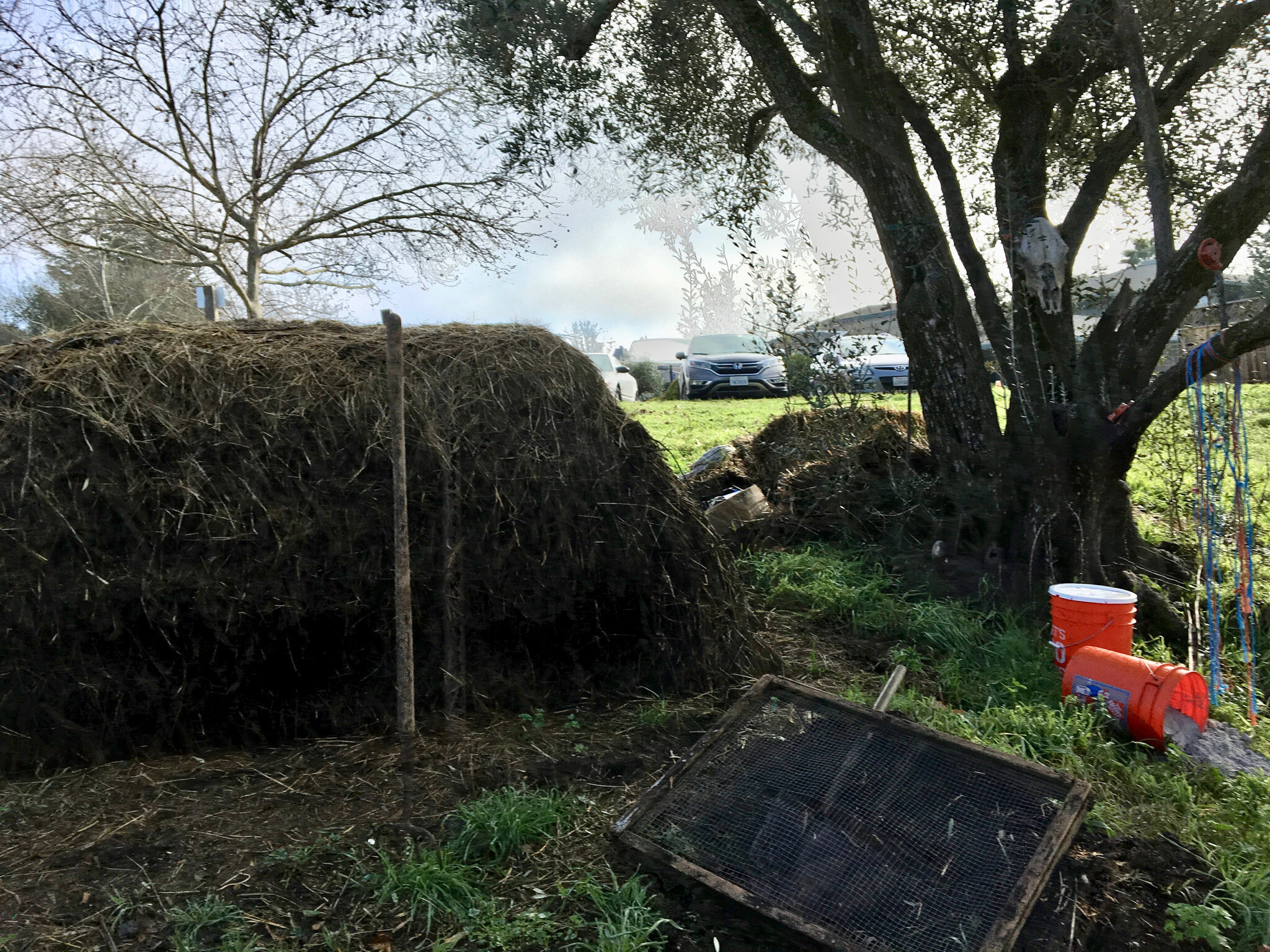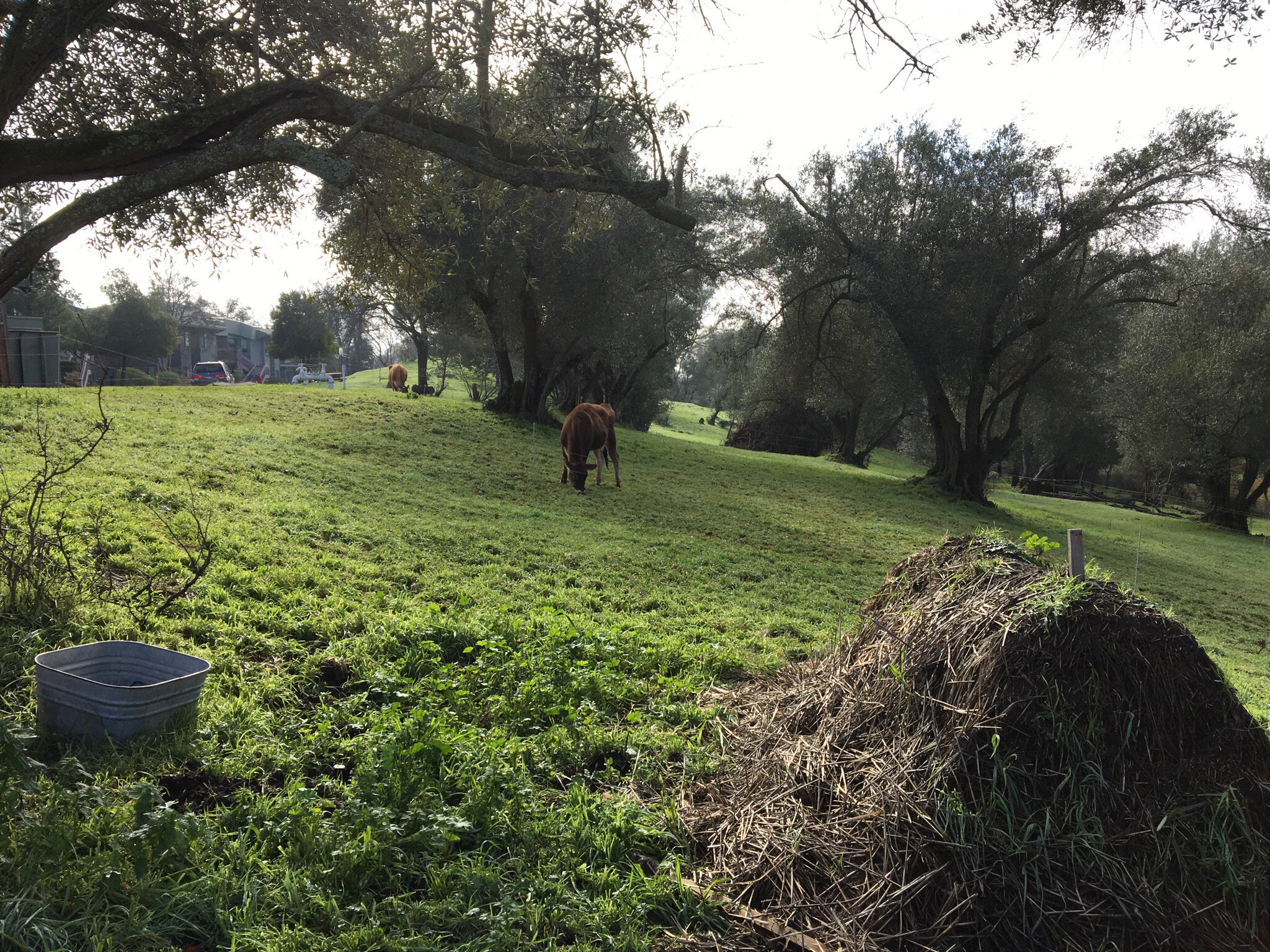Aging, Dying and Death
The season less talked about
This time of year, frost-bitten gardens look like little cemeteries. Skeletons of once beautiful dahlias stand stiff and barren. All the tomatoes, pumpkins, and squash that were hiding, are now mush. No one likes this part of gardening, and no one likes thinking about aging and dying, or putting their loved ones to rest either. But in the garden, this time of year forces you to contemplate your own mortality and I find that when I consciously listen to the season it makes doing the work more meaningful.
Writing this post was hard because it’s about a topic that most dread dealing with, or talking about, but everyone and everything dies, or changes, at some point. My mother died when I was two years old, so I’m comfortable talking about death because it’s been part of my life since I was a child. I also have aging grandparents, parents, and my silver hair reminds me that I’m aging too. The act of putting a garden to bed, building a compost pile, burning weeds, and tucking bulbs in the ground helps move into a season of rest feeling more complete and prepared. It also encourages reflection and finding a deeper appreciation for the wisdom we’ve gained as we aged through another season, and compassion for those who are dying or doing the work of putting loved ones to rest.
Here are things I do that help add meaning to this transition, in the garden, and in life:
Put the garden, or a life, to rest with care. Think of your garden as going to bed, and loved ones going to rest. Just like you sleep better when you have a routine, gardens perform better the following season if they are intentionally cared for before winter. And families putting loved ones to rest find more closure and ability to move forward when they fully mourn and say goodbye to the loved ones in their lives.
In the garden, removing all materials like stakes, signs, irrigation, and fabric are important to keeping the garden clean looking through winter, it also helps the soil to absorb more moisture, and reduces places for pests to hide. Then remove all debris and put it in a staging area to build a compost pile. Once everything is cleaned you could either till or practice the no till method. Personally, I plow or till to allow moisture to penetrate deeper into the ground and break up our clay soil. When I had a smaller garden, I tilled then added a thick layer of leaves, followed by a layer of composted cow manure. When I need more compost than I am able to make, I source loads of compost from A1 Organics and bags of biodynamic compost and worm compost from Paonia Soil for making compost tea.
I recently learned of a florist called Good Night Violet, who is serving the memorial side of the floral industry with more intention than what is typically given to those who have passed. What a beautiful tribute to honor a loved one with flowers that were meaningful to them vs the same flowers that are used at every memorial service. Another reverent way to care for a loved one who has passed, is to call on the assistance of a death midwife who helps families hold 3 day vigils in the loved ones home, clean and anoint the deceased with oils, and provide assistance for natural burials. I know this is out of the scope of what I typically talk about, but gardening speaks to me throughout all stages of life and I find listening to the season, when the garden is dying, I’m better prepared for the more tender moments in life.
Build a compost heap & burning weeds. I’ve built all sizes of compost piles from using backyard tumblers, or plastic square compost boxes, to large 3-bin community compost systems, to my new favorite a 5’x5’x5’ enormous open air heap with biodynamic preparations that I buy from Josephine Porter Institute.
Instead of throwing spent garden materials into a plastic bag where it will go to a landfill, it is easy to build a compost pile in your backyard, or ask your waste management service if they offer compost pick up. If you want to build a pile, here is how we do it at our farm:
First make a staging area near the spot you plan to build your compost heap. In the staging area, make a pile for garden waste (all plant materials including kitchen scrapes, leaves, grass clippings, fruit, etc), and a separate pile for browns (animal bedding and manure). If you don’t have animals (chickens, goats, horse, cow, llama, rabbits) consider asking a neighbor who does. I’ve found that adding animal manure significantly increases how fast the pile ‘cooks’ or breaks down, any how well it improves the soil the following year. If you have the ability to mulch leaves and other larger materials, its good practice to do so, however, don’t let it stop you from composting. I’ve added large branches and have seen other farmers compost even animals that have died on the farm. I know it breaks the rules, but natural materials do eventually compost down when the heap is large enough to heat up.
Once you have your two staging piles, and an area to build your pile, begin building your compost heap. Start by placing larger twigs on the first layer in a 5’x5’ square. Add a 3” layer of greens (dead plants, grass, kitchen scapes, leaves) then a 3” layer of manure. After the manure is added, water well and apply biodynamic preparations you have them. Repeat this process until the pile is 5’x5’x5’ and try to have the very top be flat or indented. This allows the moisture to settle in the middle keeping more moisture in the pile. Once your pile is built and watered, cover it with a tarp or burlap if you have one. If not, that is okay too but it will dry out more quickly. Let the pile rest over the winter. It might not cook down until spring but once it warms up, turn it well and water, and it will take off and turn into rich humus quickly.
Burning weeds to create a ‘pepper’ for ashing, is a new activity I’m trying on the farm this year. Instead of composting weeds, I’m going to burn them in a fire pit and will sprinkle the ashes onto the area that I’m trying to reduce weed germination. This is completely experimental at this point but I’d rather burn them then take a chance at them germinating in my compost.
There is also a theraputic element to burning. Whereas water gives life, fire leads to extinction or poetically speaking, letting go. While burning weeds, why not throw in thoughts or fears that are no longer serving you. Thoughts have a way of growing in our conscious so being aware of negative thoughts and try letting them go with a physical act, like writing them on a piece of paper and send them up in smoke along with the weeds, can help the process.
Planting spring bulbs and dreams for the future. It may seem hard at the end of the season to plant bulbs when your body is tired, but the reward in the spring pays off two-fold. Even the smallest green tips poking out of the ground is enough to break those late winter blues. Late October is the perfect time to plant spring blooming bulbs in the garden or around your landscape. Some of my favorites are tulips, daffodils, muscari, and hellebores. Brent and Becky’s Bulbs and Floret Flowers are a great online ordering resource. When planting them, toss out the idea of planting one at a time. They look more beautiful in the garden if you plant them in mass. Dig a trench, put a layer of compost on the bottom, then 10-20 bulbs side by side. Try writing your hopes, dreams, and intentions for the next season on little sheets of paper and plant them with your bulbs. Water them well, cover with soil, and rest until spring comes. If negative thoughts are like weed seeds, then positive thoughts must be like big healthy tulip bulbs that hold the courage to push through cold ground.
I hope this post gives you some new ideas to try this season, and encourages you to slow down and reflect on what the season may be telling you. If you enjoyed this post, I would love to hear your thoughts as I’m just starting to write more often and your feedback will help guide my direction.
Thanks for being here,
Gina







